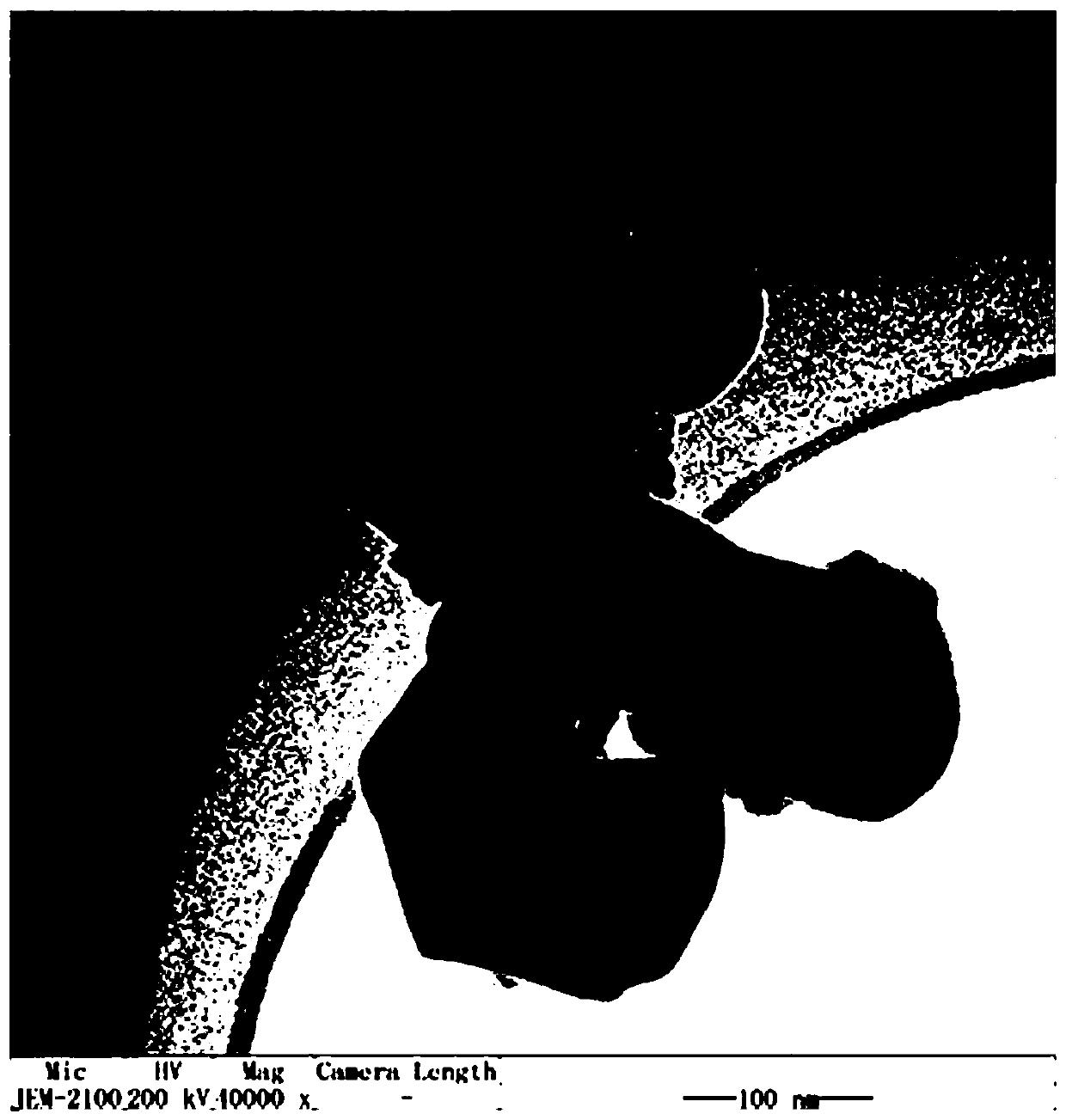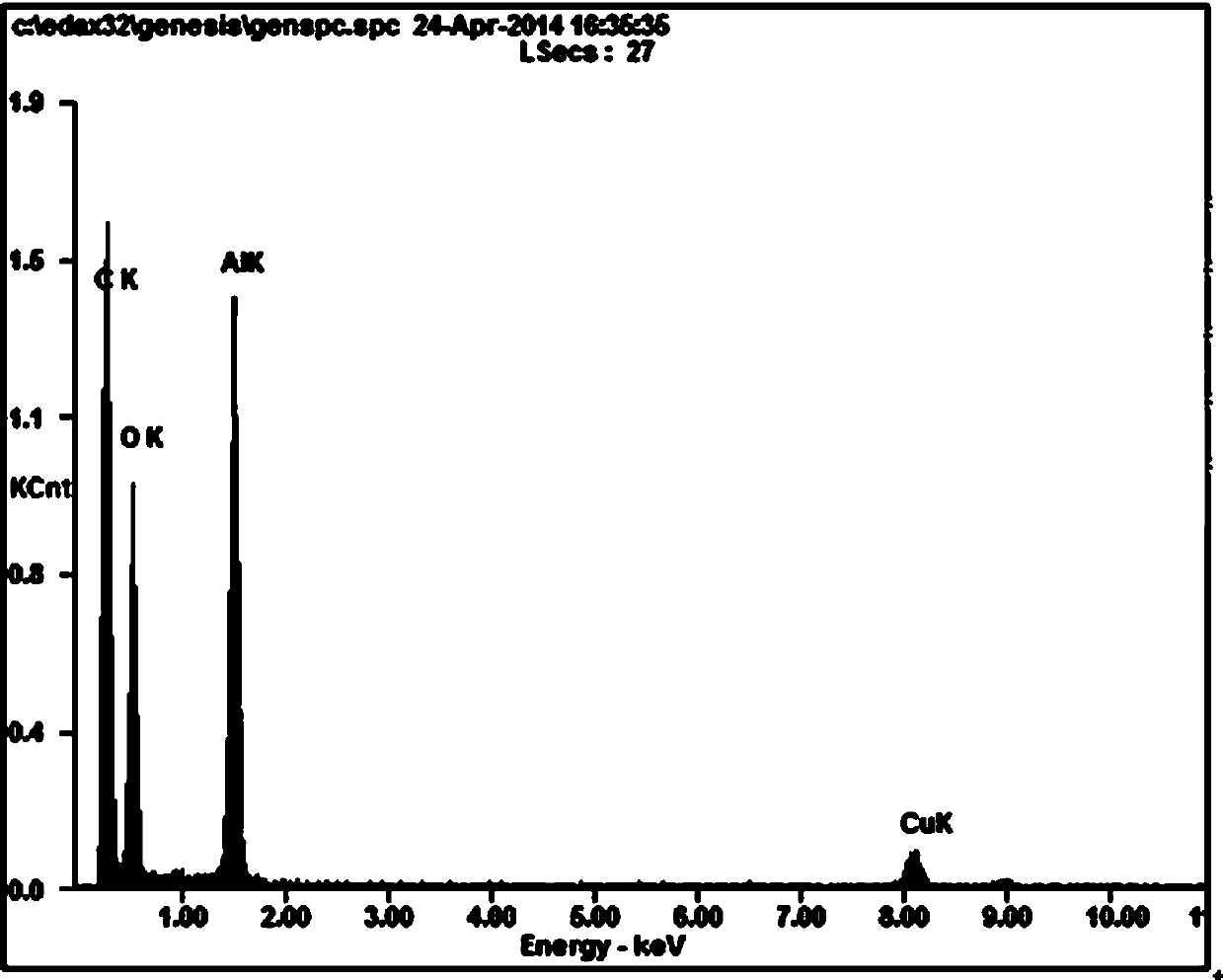Method for modifying nanometer oxide through supercritical ethanol
A nano-oxide and supercritical technology, which is applied in the treatment of dyed low-molecular-weight organic compounds, the production of bulk chemicals, and fibrous fillers, etc., can solve the problems of complex process and unsatisfactory dispersion of matrix resin, and achieves simple acquisition of raw materials, The effect of reducing agglomeration and simple operation
- Summary
- Abstract
- Description
- Claims
- Application Information
AI Technical Summary
Problems solved by technology
Method used
Image
Examples
Embodiment 1
[0026] A method for modifying nanometer oxides with supercritical ethanol. A method for modifying the surface of nanometer oxides with supercritical ethanol. In the first step, 100 parts of ethanol and 10 parts of nano-alumina are uniformly mixed and placed in a reaction kettle, which is strictly sealed; in the second step, the temperature of the supercritical equipment reaches 240°C , place the sealed reactor in supercritical equipment for heating; in the third step, start timing when the pressure reaches 6 MPa; in the fourth step, put the reactor into the cooling pool to cool the cooling water to ice In a water bath, the temperature is 0°C, and the cooling time is 40 min. Step 5: Take out the treated nanoparticles and place them in a vacuum oven for drying. After complete drying, grind them to obtain surface-treated nanoparticles.
[0027] The supercritical equipment consists of a reactor with a pressure gauge (1), a heating pool (2), and a cooling pool (3), see figure 1 ; ...
Embodiment 2
[0032] A method for modifying nanometer oxides with supercritical ethanol. In the first step, 150 parts of ethanol and 15 parts of nano-alumina are uniformly mixed and placed in a reaction kettle with a pressure gauge, which is strictly sealed; in the second step, the sealed reaction kettle in the previous step is placed in a heating tank with a temperature control device. Heating in the furnace, the preset temperature is 240.5 ℃; the third step, observe the value of the pressure gauge on the reactor, when the value of the pressure gauge reaches 6.1 MPa, start timing, and the time is 10 minutes; the fourth step, turn the reactor off after the specified time Quickly put it into a cooling pool for cooling, the cooling water is an ice water bath, the temperature is 0°C, and the cooling time is 60 min; the fifth step is to take out the treated nanoparticles and place them in a vacuum oven for drying, and grind them with a mortar after they are completely dry After the treatment, t...
Embodiment 3
[0038] A method for modifying nano-silica with supercritical ethanol. In the first step, 120 parts of ethanol and 10 parts of nano-silica are uniformly mixed and placed in a reaction kettle with a pressure gauge, and strictly sealed; in the second step, the upper The first sealed reaction kettle is placed in a heating furnace with a temperature control device for heating, and the preset temperature is 240 °C; the third step is to observe the pressure gauge value on the reaction kettle, and start timing when the pressure gauge value reaches 6 MPa. 5 min; the fourth step, after reaching the specified time, quickly put the reactor into the cooling pool for cooling, the cooling water is an ice water bath, the temperature is 0°C, and the cooling time is 40 min; the fifth step, take out the treated nanoparticles Put it in a vacuum oven and dry it. After it is completely dried, it will be ground in a mortar to get the surface-treated nano-alumina.
[0039] The obtained modified nano-...
PUM
 Login to View More
Login to View More Abstract
Description
Claims
Application Information
 Login to View More
Login to View More - R&D
- Intellectual Property
- Life Sciences
- Materials
- Tech Scout
- Unparalleled Data Quality
- Higher Quality Content
- 60% Fewer Hallucinations
Browse by: Latest US Patents, China's latest patents, Technical Efficacy Thesaurus, Application Domain, Technology Topic, Popular Technical Reports.
© 2025 PatSnap. All rights reserved.Legal|Privacy policy|Modern Slavery Act Transparency Statement|Sitemap|About US| Contact US: help@patsnap.com



